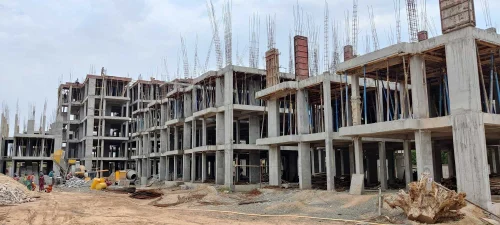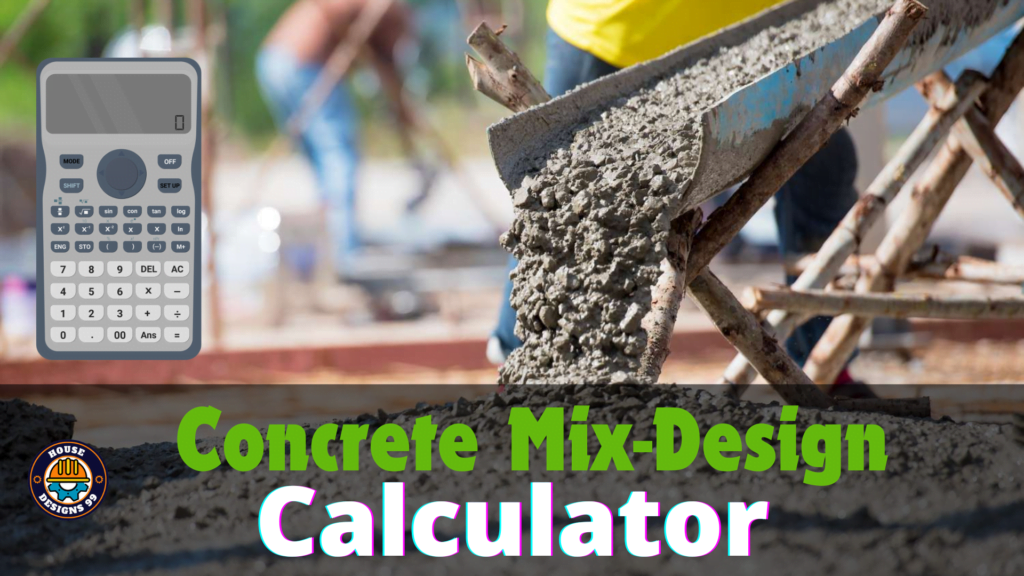An aggregate, such as sand or gravel, and cement are combined to make concrete. The concrete’s workability, strength, and other characteristics are determined by the ratio of each of these ingredients. Concrete with predetermined ratios can be used for construction, or an expert can determine the ratio depending on the specifications for the project. Concrete mix ratios and varieties are discussed in this article.
Table of Contents
ToggleWhat is Concrete Mix Ratio?
The process of choosing the right materials and figuring out how much of them to add results in a concrete mix that is not only very durable and strong but also easy to work with. This is known as concrete mix ratio, or proportioning. Depending on their properties, the proportion of each constituent in the concrete will vary.
Cement, water, and aggregates are the factors in concrete. The binding agent, or cement, creates a paste that aids in binding the particles to form a concrete mix. The following elements need to be taken into account for the perfect concrete mix:
- cement paste to aggregate ratio and cement to water ratio in the cement paste.
- proportion of coarse to fine particles, or sand.
- Adding any admixtures to concrete to achieve the required quality
Concrete Mix Design Calculator

Concrete Mix Design Types :
Concrete mix ratios can be classified into one of the following categories based on the percentage of their components:
1. Concrete with Nominal Mix
The proportions of concrete in a typical mix are predetermined. Nominal mix is typically utilised in small-scale buildings. In the case of M15 grade concrete, for example, the set ratio of cement to sand to aggregate is 1:2:4. Nominal mix concrete includes grades M5 through M20 of concrete.
2. Standard Concrete Mix
One component cement, two parts sand, and four parts aggregate make up a typical concrete mix. Standard concrete mix includes grades M25 through M50 of concrete.
3. Design Mix Concrete
A qualified civil engineer analyses the qualities of each ingredient to determine the mix ratios for design mix concrete. The ratio is established based on the specifications for the strength and quality of the concrete. In order to provide concrete the required strength according to building specifications, a variety of additives can be applied.
Grades of Concrete :
The following table comprises data on the various grades of concrete and their corresponding concrete ratios:
| Type of Concrete | Concrete Grade | Mix Ratio(Cement : Sand : Aggregates) | Characteristic Compressive Strength of Concrete at 28 Days in |
| Ordinary Concrete | M5 | 1:5:10 | 5 N/mm2 |
| M7.5 | 1:4:8 | 7.5 N/mm2 | |
| M10 | 1:3:6 | 10 N/mm2 | |
| M15 | 1:2:4 | 15 N/mm2 | |
| M20 | 1:1.5:3 | 20 N/mm2 | |
| Standard Concrete | M25 | 1:1:2 | 25 N/mm2 |
| M30 | Design Mix | 30 N/mm2 | |
| M35 | Design Mix | 35 N/mm2 | |
| M40 | Design Mix | 40 N/mm2 | |
| M45 | Design Mix | 45 N/mm2 | |
| M50 | Design Mix | 50 N/mm2 | |
| High Strength Concrete | M55 | Design Mix | 55 N/mm2 |
| M60 | Design Mix | 60 N/mm2 | |
| M65 | Design Mix | 65 N/mm2 | |
| M70 | Design Mix | 70 N/mm2 |
Design mix concrete is preferred over nominal mix. However, an engineer-in-charge may permit nominal mix for grades M20 or lower.

